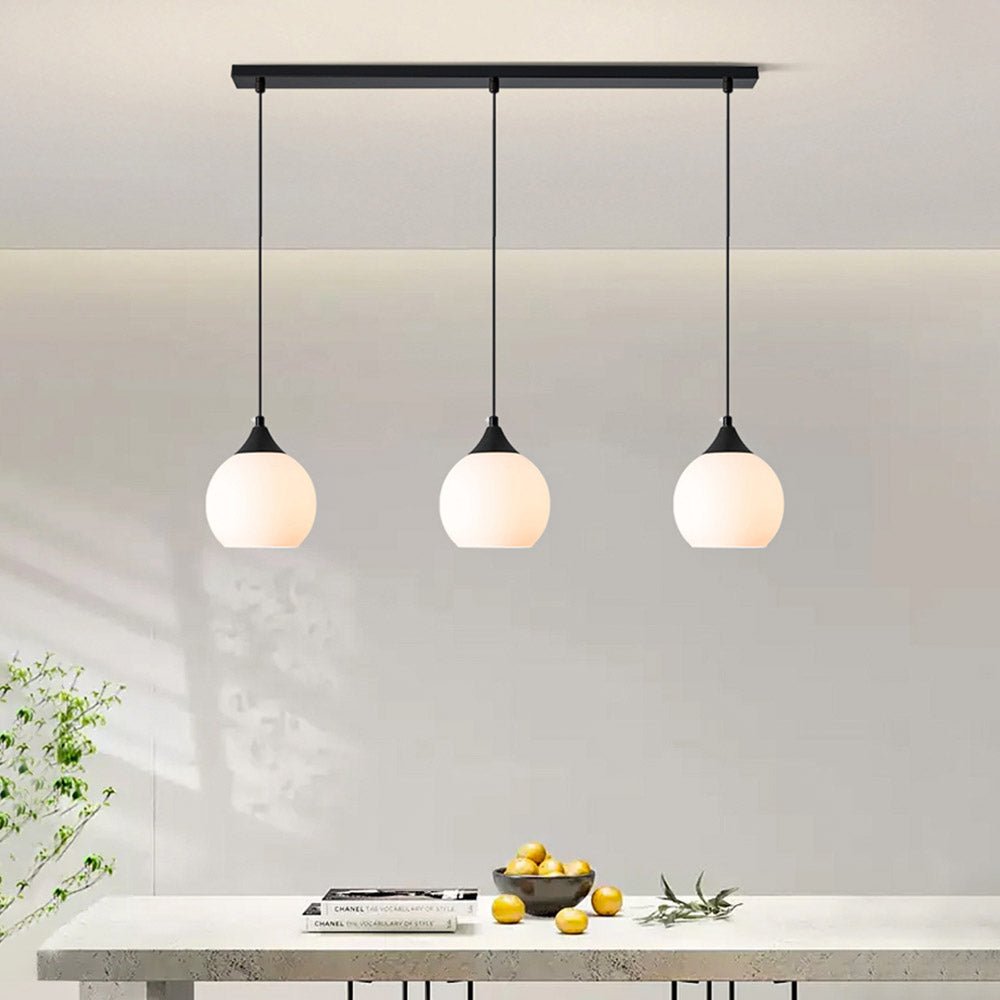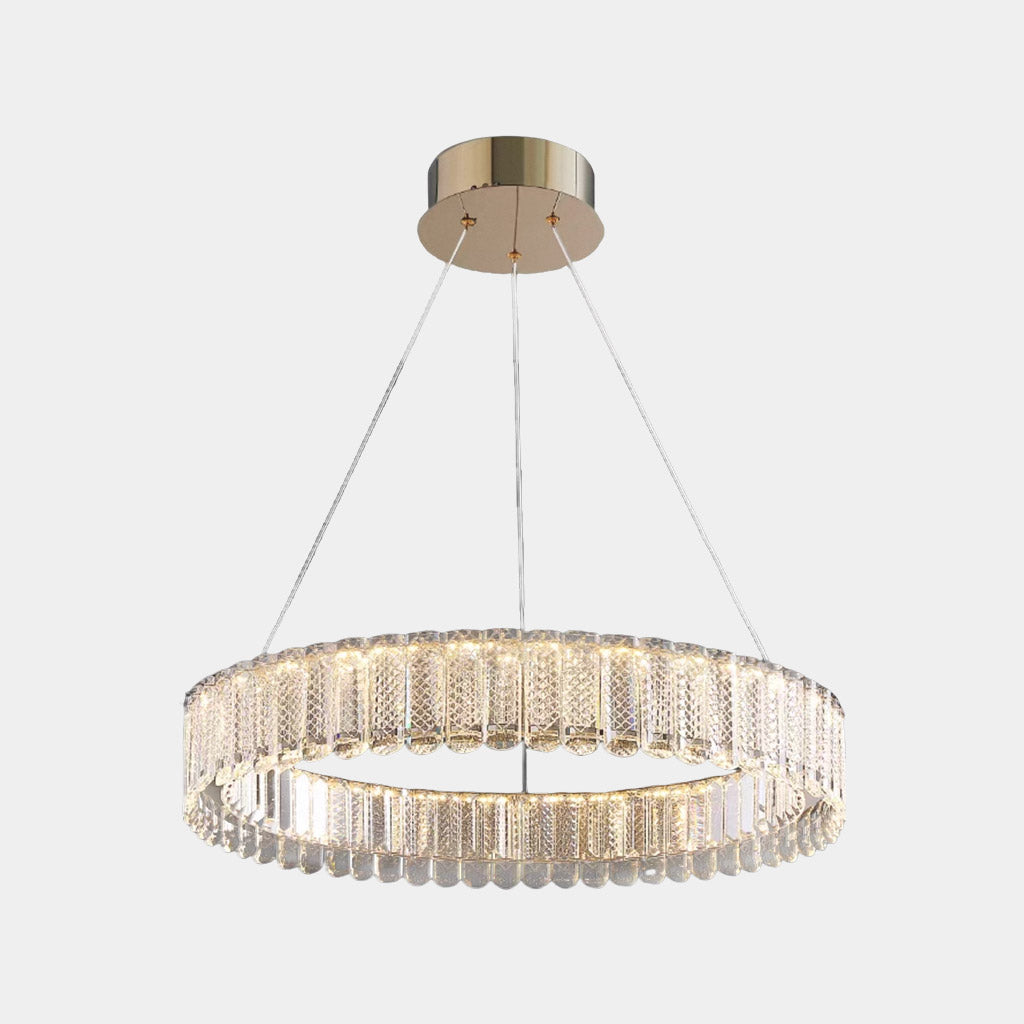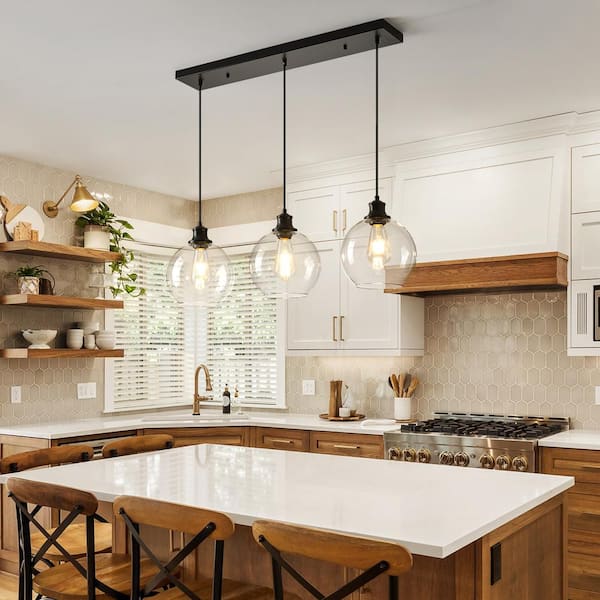Can a Pendant Light Fit Well in Homes With Compact Spaces?
Wiki Article
A Comprehensive Overview to Installing and Maintaining Your Pendant Light
Mounting and preserving a pendant light calls for mindful preparation and execution. Appropriate height measurements can enhance both performance and design. Important tools and a clear installment procedure are important for a successful setup. Regular upkeep assurances durability and efficiency. Recognizing these elements can transform an area. Knowing where to begin could appear daunting. What actions should one prioritize to accomplish the ideal results?Recognizing Pendant Light Styles
While many home owners look for to improve their spaces with Pendant lights, recognizing the various designs available is essential for making an informed option. Pendant lights are available in a wide variety of styles, each offering special visual and useful benefits. Standard Pendant lights frequently feature traditional forms and materials, such as glass or steel, giving a timeless appeal. Contemporary styles, on the other hand, might incorporate bold shades and ingenious materials to produce striking centerpieces.Industrial-style necklaces usually utilize resources like subjected light bulbs and rustic finishes, ideal for lofts and modern setups. For a more whimsical touch, vintage-inspired choices evoke nostalgia with intricate information and retro finishes. Furthermore, minimal designs focus on simplicity and tidy lines, attracting those that prefer downplayed style. Recognizing these varied styles allows homeowners to choose Pendant illumination that not just enhances their decor but additionally offers their sensible lighting needs properly.
Measuring the Ideal Height for Your Pendant Light
Just how does one determine the ideal height for a pendant light? To accomplish the finest capability and aesthetic allure, numerous elements have to be considered. Usually, a pendant light need to hang 30 to 36 inches over a dining table to ensure enough lighting without obstructing sights. Precede with high ceilings, the fixture may be placed slightly higher to preserve proportionality.For kitchen area islands, a height of 28 to 34 inches over the countertop is generally advised, enabling ample light protection while preserving a welcoming ambience. In living areas, the Pendant needs to be hung at a height that matches the bordering decor and does not create a danger for people walking under it.
Ultimately, personal choice and room dimensions play significant functions in identifying the ideal height. Checking various elevations before final installation might aid attain the wanted effect and functionality.
Tools and Products Needed for Setup
Successful setup of Pendant lights requires a particular collection of products and tools to ensure a smooth process. Vital devices consist of a screwdriver, cable pole dancer, and a drill, which help with safe component add-on and appropriate circuitry. A voltage tester is crucial for confirming security by making sure that power is off before starting any type of electric work.In enhancement to tools, certain products are necessary for installation. These consist of the Pendant lighting fixture itself, electric wiring, cable nuts for secure links, and mounting hardware. A ceiling hook may additionally be required, relying on the fixture's style.
For added safety and comfort, a ladder will aid within high ceilings, while a degree assures that the light hangs evenly. Preparing these devices and products in advance improves the installment procedure, making it a lot more efficient and effective. Proper prep work is necessary to accomplishing an effective Pendant light installment.
Step-by-Step Installation Refine
With the essential devices and materials collected, the setup procedure for Pendant lights can start. Initially, the power supply need to be turned off at the breaker to ensure safety. Next, the installing bracket requires to be affixed to the electric box in the ceiling. After securing it, the electrician's tape ought to be made use of to cover any exposed wires.Complying with that, the Pendant light's cables are linked to the corresponding cables in the ceiling: black to black (or red), white to white, and eco-friendly or copper for ground. As soon as the connections are made, they ought to be secured with wire nuts.
The Pendant light can then be connected to the mounting brace, ensuring it hangs at the desired height. Finally, the light bulb is put, and the power is transformed back on at the circuit breaker, permitting the new Pendant light to light up the area.
Keeping and Cleaning Your Pendant Light
What steps should be required to assure the long life and visual allure of Pendant lights? Routine maintenance and cleaning are crucial in protecting their elegance and capability. Dirt and dust can build up on Pendant lights, lessening their luster. To cleanse, a soft, lint-free towel or microfiber towel ought to be used, along with a mild cleaner ideal for the surface material - Pendant Light. For glass or crystal pendants, a glass cleaner can enhance clearness without touchesIt is recommended to transform off the light and allow it to cool down prior to cleansing. Additionally, checking the fixture for loose bulbs or links regularly ensures safety and height performance. Transforming bulbs regularly protects against strain on electric elements if relevant. Lastly, maintaining a secure setting by avoiding exposure to wetness can greatly expand the life of Pendant lighting. Following these steps will certainly keep Pendant lights looking their finest while functioning effectively.
Troubleshooting Typical Pendant Light Issues
When pendant lights breakdown, numerous typical concerns may arise, including flickering light bulbs, wrong installment, and voltage changes. Identifying the source is essential for efficient fixing and ensuring peak performance. Dealing with these problems promptly can enhance the longevity and capability of Pendant lights fixtures.Flickering Light Light Bulbs
Flickering light bulbs can be a resource of frustration for property owners, often indicating underlying electrical issues or easy upkeep needs. This phenomenon may come from loosened light bulb links, where the light bulb is not safely fitted right into the socket, causing recurring get in touch with (Pendant Light). Additionally, malfunctioning or aging light bulbs might flicker as they near completion of their lifespan. An additional typical cause is inconsistent voltage, which can emerge from problems within the electrical system or overwhelming circuits. Homeowners ought to additionally inspect for harmed circuitry, as this can result in flickering and posture safety and security risks. Normal examinations and timely substitutes are essential to ensure correct functionality and to maintain a risk-free home setting. Determining the source immediately can avoid more difficulties
Incorrect Installation Problems
Inappropriate next page setup of Pendant lights can result in a series of problems that might appear like those caused by flickering bulbs. Common problems consist of loose electrical wiring links, which can disrupt the flow of electrical energy and lead to periodic lighting. In addition, if the placing bracket is not safely secured, the Pendant may hang unevenly, creating an unpredictable fixture that can trigger resonances or sound. Wrong light bulb kinds or power level can also add to efficiency concerns, as inappropriate light bulbs might not function effectively in the fixture. Insufficient spacing from the ceiling can produce shadows or lower light circulation, reducing the designated impact of the Pendant light. Determining and addressing these installation errors is necessary for accomplishing correct performance and visual charm.Voltage Fluctuation Troubles
Pendant lights can enhance an area's atmosphere, voltage fluctuations can lead to significant performance concerns. These fluctuations might trigger flickering lights, decreased brightness, or even early light bulb failing. To detect such problems, one should initially inspect the lighting fixture's compatibility with the voltage supply. Making use of a multimeter can assist measure voltage levels and recognize irregularities. It might be essential to inspect the electric system for loose links or damaged circuitry if voltage issues persist. Sometimes, speaking with an accredited electrician is suggested to guarantee security and compliance with local codes. Appropriately addressing voltage variations not just boosts view website the performance of Pendant lights yet also extends their life expectancy and improves total lights high quality.Enhancing Your Area With Pendant Light Positioning
Effective Pendant light placement can significantly boost a space by sticking to perfect elevation guidelines, guaranteeing the best illumination degree. Layering these lights with other sources can produce a balanced atmosphere, highlighting centerpieces within the space. Accomplishing an unified look requires careful consideration of both the fixture's positioning and its relationship with surrounding components.Optimal Height Standards
When pondering the excellent height for Pendant lights, a general standard recommends hanging them approximately 30 to 36 inches above a counter top or table surface. This elevation permits maximum lighting while ensuring that the light does not obstruct sights or develop risks. In eating locations, Pendant lights must be placed to enhance the eating experience, normally around 28 to 34 inches above the table. For cooking area islands, maintaining uniformity throughout multiple pendants can produce a natural look; spacing them equally and sticking to the suggested height boosts performance. It is important to consider ceiling height as well, as greater ceilings may require modifications to keep proportionality and aesthetic charm. Appropriate elevation placement significantly contributes to the total ambiance of a room.Layering With Various Other Lights
As Pendant lights are incorporated into a broader lights layout, they can considerably boost the atmosphere of a room. Their flexibility enables them to be layered with ambient, job, and accent illumination, producing a harmonious balance. For instance, incorporating pendant lights with recessed lighting can give general lighting while highlighting particular locations. Job illumination, such as under-cabinet lights, can enhance pendants in kitchens, making certain capability without compromising design. Accent lights, like wall sconces, can additionally enhance the setting, attracting interest to art work or architectural features. By purposefully positioning these lights, homeowners can accomplish depth and dimension, changing a normal area into a magnificently brightened setting that deals with numerous tasks and state of minds.Centerpieces and Balance

Purposefully placed Pendant lights can act as enchanting prime focus within an area, drawing the eye and boosting the total aesthetic. When selecting pendant lights, it is critical to take into consideration their form, dimension, and color to ensure they match the existing décor. For instance, a vibrant, oversized Pendant can produce a striking centerpiece above a dining table, while smaller fixtures might function better in collections to achieve a well balanced appearance. Furthermore, placing Pendant lights at varying elevations can include deepness and aesthetic interest to the space. Maintaining equilibrium with various other components, such as furniture and wall surface colors, will guarantee that the Pendant lights improve the area without overwhelming it. Thoughtful positioning transforms the atmosphere, creating an unified and welcoming ambience.
Often Asked Inquiries
Can I Set Up a Necklace Light in a Recessed Ceiling?
more tips here The question of whether a pendant light can be installed in a recessed ceiling usually emerges. Generally, it is possible with proper placing hardware, ensuring correct support and electric connections for reliable and safe setup.What Type of Bulb Is Best for Pendant Lighting?
When selecting bulbs for Pendant lights, LED alternatives are typically chosen because of their energy effectiveness and longevity. Furthermore, the color temperature level should match the desired setting, with warm white being a popular option for comfy setups.Are Pendant Lighting Safe for Outdoor Use?

Just how Do I Choose the Right Pendant Light Electrical Power?
Choosing the appropriate Pendant light electrical power entails reviewing the area's dimension, preferred brightness, and fixture compatibility. Commonly, reduced power levels fit ambient lighting, while greater wattages offer task lights, guaranteeing performance and visual allure.Can I Utilize a Dimmer Change With My Pendant Light?
The question arose whether a dimmer button can be utilized with a pendant light. Typically, if the light and light bulb work, a dimmer button can properly improve setting and control illumination levels.
When pendant lights breakdown, a number of usual issues might emerge, including flickering light bulbs, wrong setup, and voltage changes. Incorrect installment of Pendant lights can lead to an array of problems that may resemble those triggered by flickering bulbs. Insufficient spacing from the ceiling can produce shadows or decrease light distribution, lessening the intended impact of the Pendant light. Reliable Pendant light placement can significantly improve an area by sticking to ideal elevation standards, ensuring the best illumination degree. When selecting light bulbs for Pendant lights, LED options are often favored due to their power efficiency and durability.
Report this wiki page